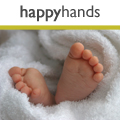Baby
Shopping
The Real Nappy Evolution
Ecologically friendly, reusable nappies look funky, can save you money and are now so much easier to use and to wash than they were two generations ago. Here Baby Directory looks at the advances in nappy design that might just tempt you to mix real and disposables or to go all-out for reusables!
If your idea of real nappies is a distant memory of buckets filled with soapy water and stinky terry nappies, think again. While the campaign to get more parents using reusable nappies has snowballed over the past 10 years or so, several brands have worked hard to makeover the heavy old terry nappy of bygone days.
Now real nappies can be just as easy to change as disposables, they are made of lighter more comfortable material for your baby to wriggle around in, they are often made from quicker-drying material, and they no longer have to cost you a fortune in starter packs…
The real nappy evolution
• Easy to change
bumGenius have really taken off because their nappies are as easy to change as disposables. Designed just like a disposable with stretchy velcro tabs, their All-in-One has an absorbent layer integrated into the waterproof outer layer so it goes on all in one step.
• Looking good
Companies like Tots Bots were the first to realise that a reusable nappy didn’t have to come just in white or cream. Starry wraps cover basic nappy liners, real swimming nappies come in bold colours, and fluffy cotton-covered baby-bottoms can now be seen crawling around the nation’s homes in a rainbow of delightful colours.
• No pins
In the good old days, mummy and daddy might have been wrestling to ensure the safety pins they were fixing the nappy in place with weren’t going to stab their darling little one. Not any more! Many styles now come with fixings attached (eg Tots Bots nappies have Aplix fastening, bumGenius nappies feature stretch-to-fit fastening tabs, and Mother-Ease covers have popper or Velcro fasteners), while Nappi Nippas are cheap, clever little grips that can hold cotton nappies in place without using sharp pins.
• A cheaper option
At one time, the cost of buying a starter pack of reusable nappies plus the added expense of then buying new nappies as your baby grew meant that reusable nappies, across the two to three years’ use before a baby was fully potty-trained, didn’t save a substantial amount of money compared to buying one of the supermarket’s own-brand disposable ranges. However, durable fabrics and one-size ranges (from the likes of Cottontail and One Life) mean that now a starter pack of nappies plus a few extras will see you through until your child no longer needs nappies at all. Many starter packs, like those from bumGenius (their ‘Econobum’ range) and Cottontail cost less than £100, and trial packs are priced less than £20 for those who want to sample the whole reusable regime before they take the plunge.
• Earth kind
Although there are now some biodegradable disposable nappies on the market, most disposable nappies simply add to the landfill waste we are creating every day. Using reusable nappies reduces waste and when you no longer need them, they can be discarded through textile recycling. Many nappy brands, like Cottontail, also use organic cotton.
• Council offers
Many local councils offer cash incentives for parents to use real nappies in order to reduce waste. Go to your local council’s website to find offers in your area.
• For heavy or light use
Brands like Bambino Mio design their nappies so that they can be folded differently for boys to girls, and they offer tips on how best to use their liners and wraps for more solid or ‘loose’ stools.
• Soft and comfy
Real nappies now come in a snug-fitting cut or with a wrap that has gently elasticated leg holes so it won’t rub on your baby’s skin. Many brands use bamboo fibre fabric – a natural fibre that is also biodegradable. It’s silky but absorbant and even has natural antibacterial properties.
• Washing’s a breeze
One of the arguments against reusables for many years was that to get them really clean, you had to wash on a high temperature – and tumble dry - tipping the balance against the eco-benefits. Now many nappies are designed so that only the liners need to be washed, reducing laundry bulk, and silky materials mean that most of the time the heavy soiling can be shaken off into the toilet before washing, reducing the need to run hotter washes so often.
For more information about what using real nappies involves, visit the Go Real website.
Related Articles
Buyer's guide to nappy rash treatments
Business profile: Claire Fuller - Mabymule
Business Profile: Lucie Trinco - Il Tutto
Update your summer style with a Koochu
Il Tutto unveil their summer collection
Related Products
Purepotions, Lavender Nappy Salve
Have Your Say
Comments in chronological order (Total 1 comments)





24 May 2010 10:29am
We have just made the switch to cloth, and absolutely love it. Wish we had done it earlier. So much easier than I thought it would be. And looks so cute!